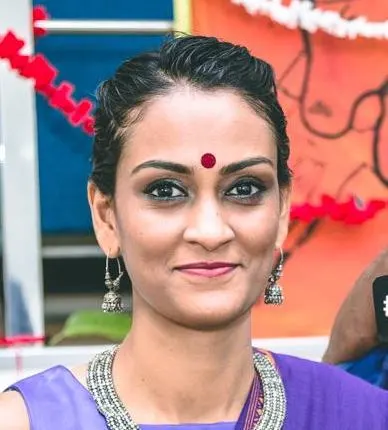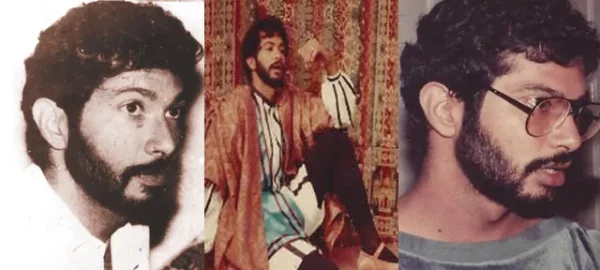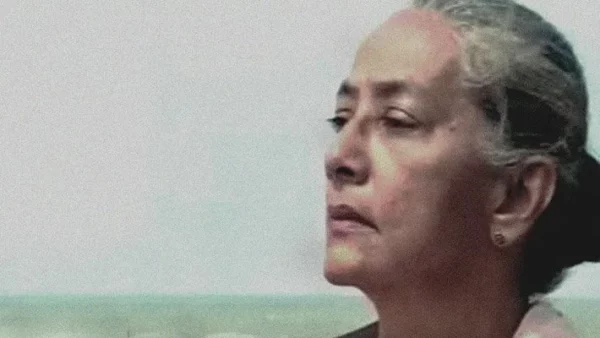Richard: Whose Life Guides My Own – By Roel Raymond
Source : colombotelegraph

Roel Raymond
I never really knew my uncle Richard. I was five when he was murdered on February 18, 1990, and would have just entered kindergarten. The earliest reference of him came through a childhood incident that involved his mother, Manorani Saravanamuttu—‘Babbia Sinnamma’ to me. For a period after his death, Babbia Sinnamma lived in our house, in Colpetty. She had two Ridgebacks, a male and a female. The grumpy male was Porgy, and the sprightlier female, Bess; titular characters of Dorothy and DuBose Heyward’s play Porgy. One day, when I was about 11, and playing in the garden, I tried to feed Porgy a snail, and he bit me in the ear. In the ensuing caterwaul, I demanded my mother exact revenge—I wanted retribution for having my generous offer rejected so cruelly.
My mother, who, together with Babbia Sinnamma had rushed out the house on hearing my wails of pain, whispered urgently for me to be quiet! I didn’t know why she asked me to be quiet, but I was hushed into silence by her unexpected tone. I could see Babbia Sinnamma’s quietly sympathetic face hovering over my mother’s shoulder. It was only later that my mother—my ordinarily fierce and over-protective mother— told me quietly that Porgy and Bess were “like children” to Babbia Sinnamma “after her son died.” She didn’t tell me how he had died, or why. Simply that he had. It was important to my mother at that moment, not to hurt the feeling of my grand aunt, her aunt, who had been through so much. It was only much later in life that I understood the significance of that incident.

Richard de Zoysa
I remained largely untouched by Richard’s death during my adolescence. Babbia Sinnamma moved out to a place close to our home, and my mother visited her regularly. I heard Porgy and Bess had passed on, and much later, Babbia Sinnamma too, passed away. The murder of my uncle only came back to haunt me in my twenties, in my mother’s disapproval of my career as a journalist. While she has never explicitly said the words, ‘I don’t want you to be a journalist because of what happened to Richard,” she has in every other way, emphatically and repeatedly, voiced her displeasure at my involvement with anything even remotely linked to politics. My airy defence, “I didn’t choose journalism, journalism chose me (#fact),” does little to reduce her disapproval.
With time, as I made deeper forays into journalism, my understanding of the circumstances surrounding Richard’s death became clearer. What also became manifestly clear to me, first as a cub journalist, and later as a more established one, was that the memory of the life and death of Richard De Zoyza belonged not solely to his family, but also to a larger cause and conversation. His name would come up habitually in the circles I frequented, and the conversations would invariably make me uncomfortable. Here, he was discussed as though he were a cardboard pin-up, a face on a poster, a stranger. And while people were mostly kind in their thoughts towards him, there were times his loyalties were questioned, his sexuality disparaged and the word ‘elitist’ bandied in too malicious a manner. And through it all, I remained quiet, just as my mother had once asked me to.

Dr. Manorani Saravanamuttu
As a journalist in Sri Lanka, I am all too aware of the numbers of that have fallen. Beginning with the assassination of Thevis Guruge in 1989, the attacks against the media have been perpetrated with indemnity and impunity. Richard’s murder, in 1990, was the first by state-sponsored actors—and the incidents of intimidation, assault, murder and disappearances have only continued. There have been no convictions to date, and the absence of accountability is proof that the current respite is only temporary. Had there been any justice in Richard’s case, and the countless others that preceded and followed, my preoccupation with his murder and continued contemplation of the futility of justice may have never occurred. But the lacuna continues to breathe life to Richard’s death.
Although I have no memories of him, to me, Richard’s death is deeply personal. It is linked to my memories of Babbia Sinnamma’s sweet face; it is communicated to me in the anxiety of my mother’s voice; it is raised every time he is remembered with sorrow by friends and loved ones, and whenever he is spoken of in journalistic circles. I continue to carry with me the knowledge that Richard’s death was never resolved. It shapes the decisions I make, and emphasises my commitment to my craft. Despite her hope and fight for justice, Babbia Sinnamma did not believe the murder of her only son would be avenged. Richard would have been 61 this month. For his sake, and for the countless others who were killed like him, I hope, if not in this, world, there will be answers in the next, someday. “For now, we see through a glass, darkly; but then face to face…”







